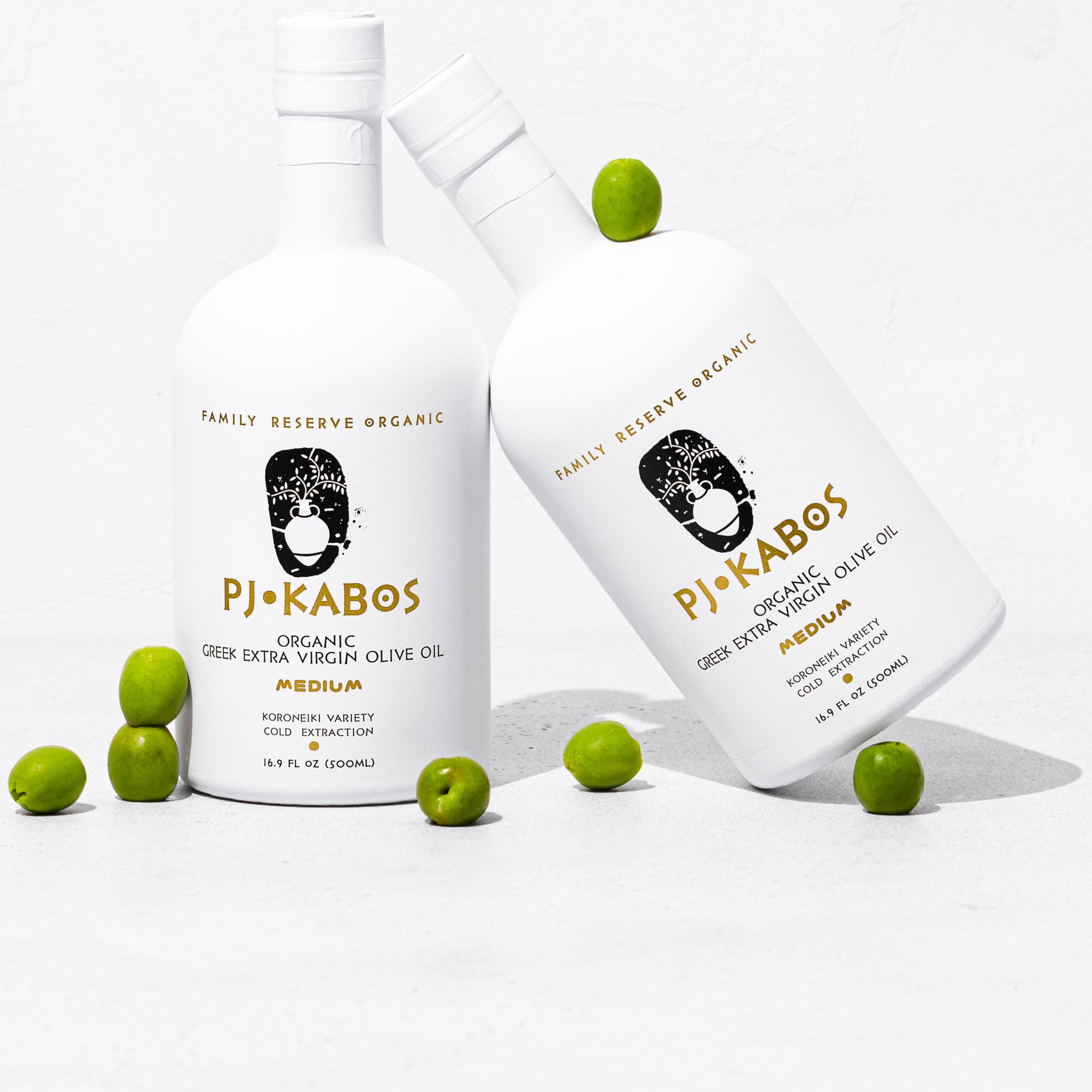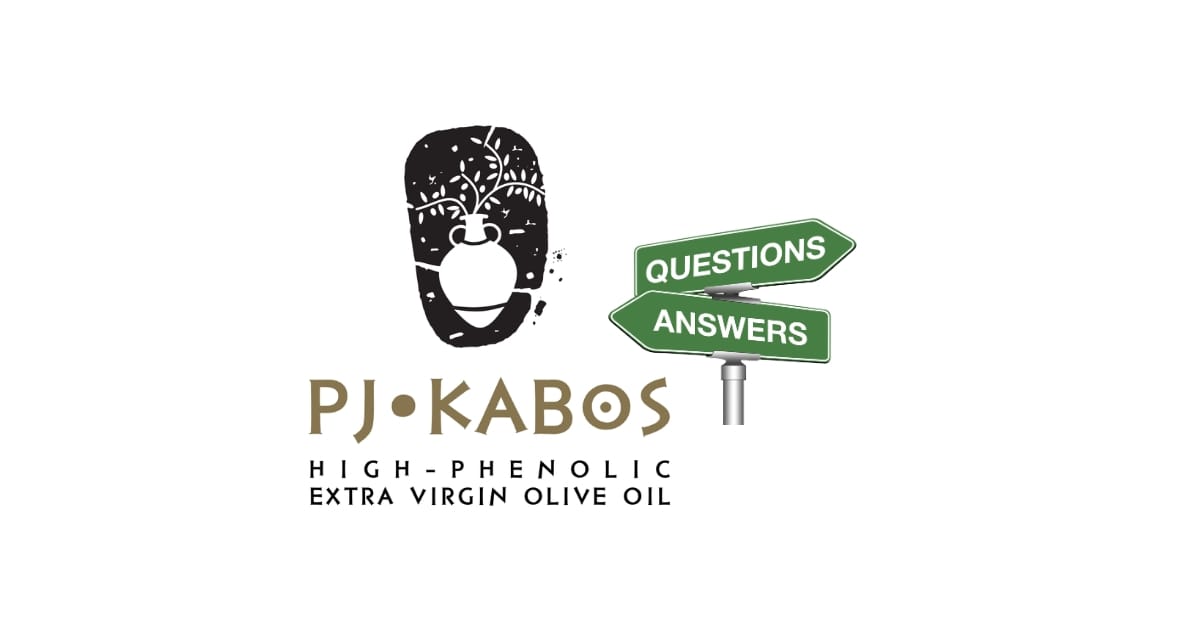While you should always check with your veterinarian before making any additions to your cat’s diet, there’s reason to believe that olive oil (in moderation) may provide some benefits for your feline friend. But is it the absolute best choice? Let’s dive in.
It’s widely known that olive oil carries numerous impressive health benefits for humans—from reduced inflammation to enhanced immunity to improved neurological and heart health—thanks to its abundance of healthy fatty acids (olive oil predominantly contains monounsaturated fats, or MUFAs), polyphenols, and micronutrients. But are there benefits of olive oil for your cat?
First, let’s get the most important fact out of the way: Olive oil is non-toxic when used both orally and topically with cats. And while olive oil has not been as robustly studied in cats as it has in humans, some pet owners and veterinarians have seen the benefits first-hand—particularly for pesky conditions like dry skin and dandruff, matted fur, hair balls, ear mites, and constipation, which we’ll talk about below.
One important note about olive oil and extra virgin olive oil, however, is that it should never be used as your cat’s sole source of dietary fat. That’s because it lacks sufficient quantities of omega-6 and omega-3 polyunsaturated fatty acids—these are essential fatty acids that cats can’t produce on their own, so they must be obtained through food in order for them to survive.
According to an article written by veterinary nutrition expert Catherine E. Lenox, DVM, in Today’s Veterinary Practice, deficiency of omega-6 fatty acids can cause skin and coat abnormalities, reproductive problems, and failure to thrive; while omega-3 fatty acid deficiency may result in neurologic abnormalities, such as decreased visual acuity.
Most commercial cat foods are formulated to contain at least the minimum requirements of omega-6s and omega-3s, although omega-6s are usually present more abundantly. Typically, if a veterinarian advises you to provide additional fat in your cat’s diet, they often recommend omega-3-rich fish oil as the top choice. But because fat is higher in calories than carbohydrates or protein, added fats of any kind are not always appropriate for overweight cats.
However, this doesn’t mean there’s no place for olive oil in your cat’s diet and overall wellness routine. If you have a generally healthy cat, here are a few specific ways EVOO may benefit your furry friend. Just remember, you may want to double check with your vet!
Dry Skin
A small amount of extra virgin olive oil may be added to your cat’s food a few times a week to moisturize skin and combat irritation and inflammation from the inside out—thanks to anti-inflammatory fatty acids, polyphenols, and skin-supporting vitamin E.
While it’s difficult to know exactly how much olive oil will benefit your cat, common recommendations suggest keeping the dose small—one teaspoon drizzled over your cat’s food 2-3 times per week should be enough, but you can always check with your vet.
Constipation
Olive oil (and fat of any kind) can promote motility and stimulate bowel movements in cats by stimulating the gastrocolic reflex, and by lubricating the intestines which makes it easier for stool to pass through. Just use sparingly, since too much fat can have a laxative effect and cause diarrhea. Some cats are quite picky, though, and you never want to force them to consume olive oil. Tuna packed in olive oil can be a great way to get your cat to eat it voluntarily.
Keep in mind, feline constipation can be caused by diet change, dehydration, bowel obstructions, or any number of underlying conditions, including kidney disease—so you don’t want to ignore it. According to the Cornell University College of Veterinary Medicine, cats typically have a bowel movement 1-3 times a day, and you should call your vet if your cat hasn’t had a bowel movement in more than 24-48 hours, or if they are in distress.
Matted Fur
Many cat owners swear by using olive oil topically on their cat’s fur to remove pesky matted areas. To do this, use a syringe (the non-needle kind) to apply olive oil to the base of the mat as close to the skin as possible, gently rub it in, and then—poof!—a few days later, the mat just falls off. Re-apply more olive oil after about three days if it doesn’t work. Cover your furniture with towels if you’re worried about staining.
Hairballs
Hairballs (a.k.a. that tube-shaped regurgitated cat fur that ends up all over your house) are a result of cats’ incessant need to groom themselves—and they’re pretty gross. Plus, the process of hacking them up isn’t the most pleasant for your cat. The good news: Adding about 1 teaspoon of olive oil to your cat’s food once a week can lubricate the digestive system and may help hairballs pass out the other end with ease. High-fiber canned pumpkin is another great way to keep your cat’s digestion regular and allow hairballs to pass easily.
Ear Mites
If your cat is scratching their ears or shaking their head much more than usual, and you notice a dark discharge from the ears, they could have ear mites. Ear mites are tiny parasitic arthropods (basically microscopic spider relatives) that are quite common in cats, and can occur in dogs as well. They feed off of wax and oils in the ears and cause loads of irritation. An animal typically gets ear mites after exposure to another animal with the mites.
If not treated properly, ear mites can also contribute to outer and inner ear infections that may cause serious damage to your cat’s eardrum if left untreated—so if you do suspect mites, contact your vet ASAP. But if your appointment is delayed, olive oil may offer some momentary relief by soothing ears and helping smother and asphyxiate ear mites. It’s not the best long-term strategy, however, since oil may promote yeast growth in ears over time.
To try it, place your cat in your lap (swaddling them in a towel can help), place a drop or two of EVOO into the round opening of your cat’s ear canal from a dropper bottle (the oil should be slightly warm, but not hot), gently massage the base of the ear to work in the oil for 30-60 seconds. Allow your cat to shake their head, then after about 5 minutes, wipe away any debris that’s come out with a cotton ball.
Bottom line
Olive oil can be a great topical natural remedy for a variety of common cat problems such as hair balls, matted fur, and ear mites; and when incorporated into your cat’s diet, it may help promote moisturized skin, regular bowel movements, and hairball prevention. However, from a nutritional perspective, there may be superior dietary sources of fat for your cat such as fish oil, which is abundant in omega-3s. So it’s always a good idea to check in with your vet.
Product placement
PJ KABOS 'Family Reserve Organic - Medium'
High Phenolic and 2022 Gold-Award Winner.
Declared as 'One of the World's Best Olive Oils'.
Click here to shop.





